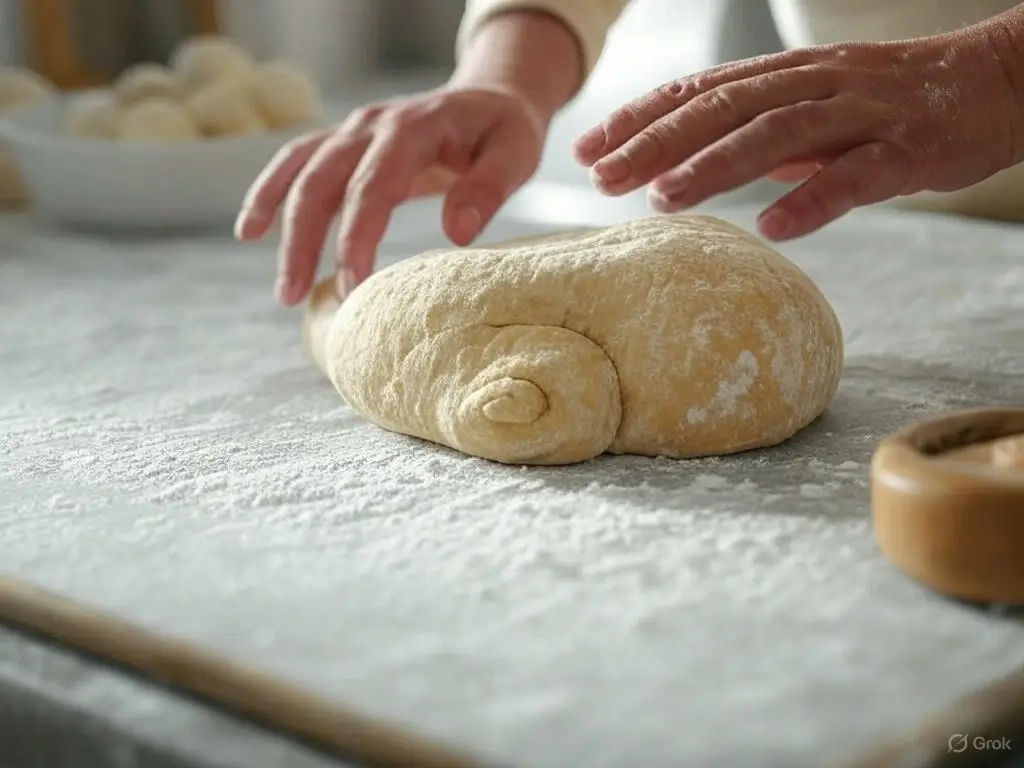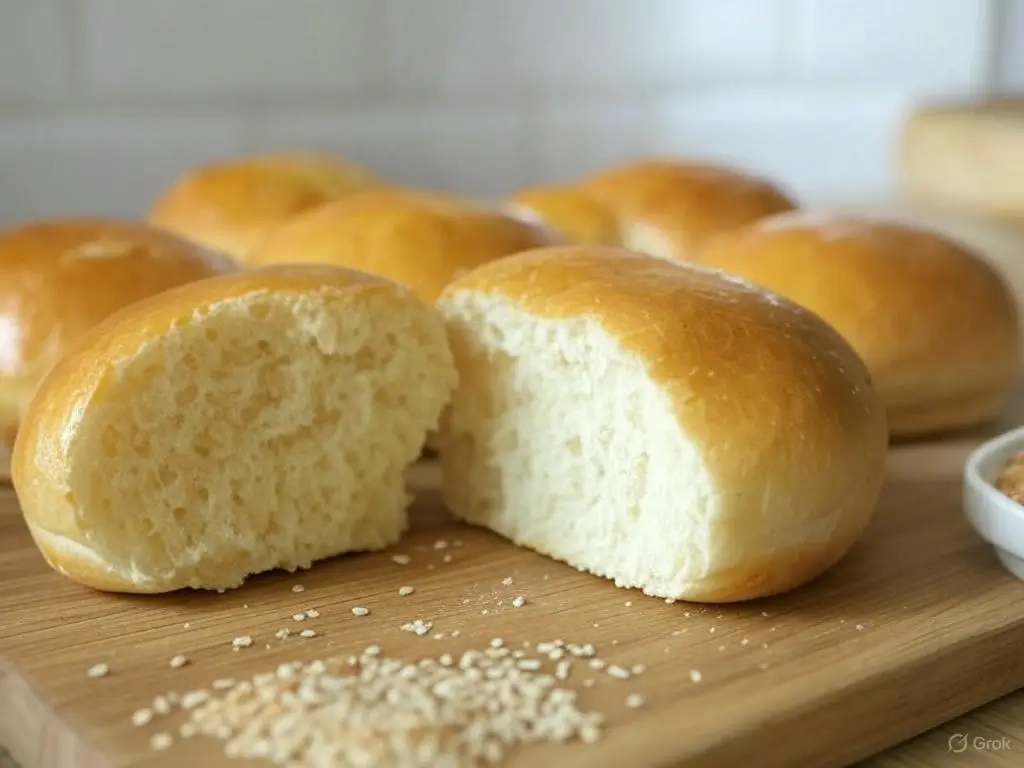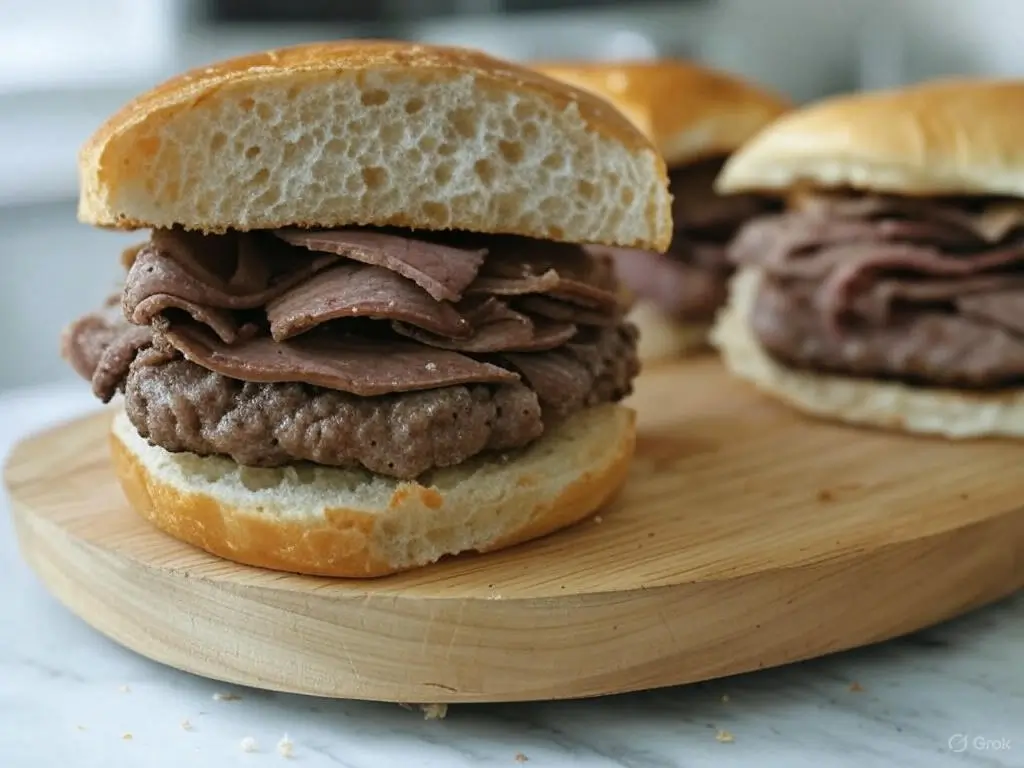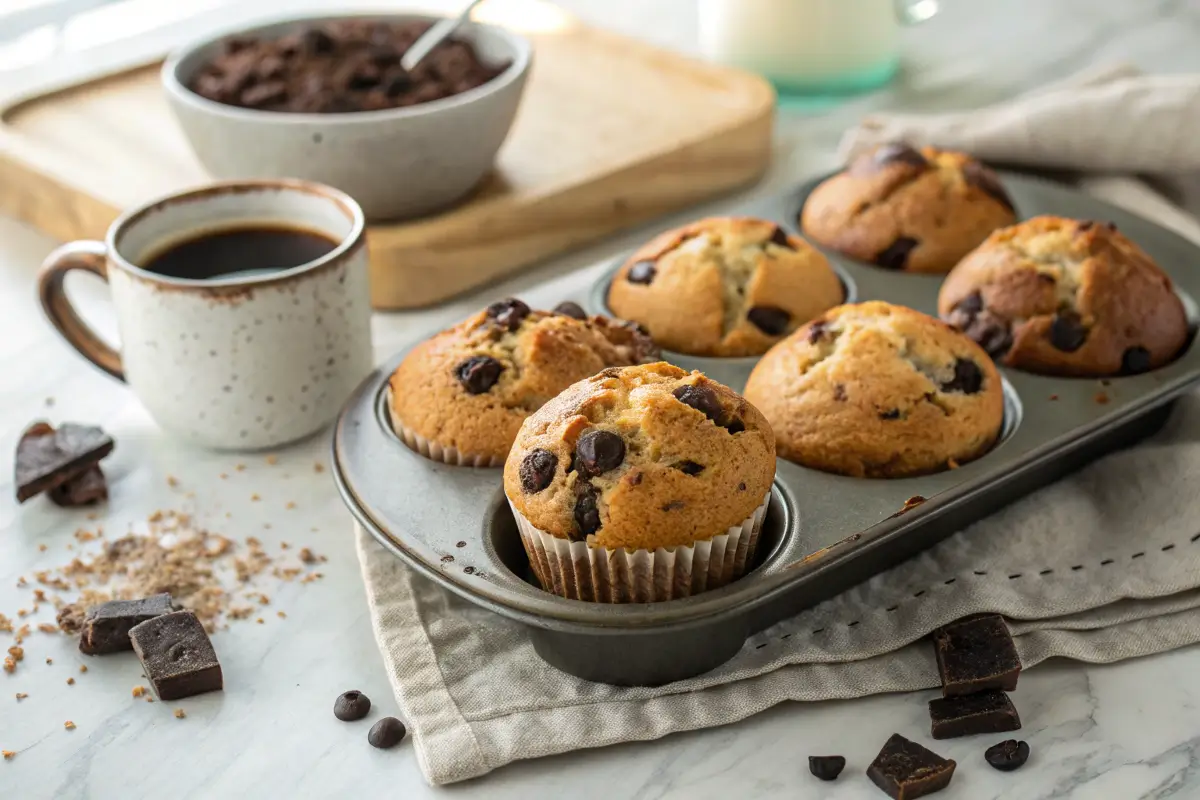What is the Difference Between a Kaiser Roll and a Bun? Unveiling the Bread Mystery
Ever wondered what sets a Kaiser roll apart from a bun while you’re eyeing those bakery shelves? Well, you’re in for a treat! In this article, we’re diving deep into the delicious world of bread to uncover the secrets behind these two staples. From their texture and taste to their historical roots and practical uses, we’ll explore every angle.
Whether you’re curious about their baking techniques or just want to know which one’s best for your next burger, we’ve got you covered. Plus, we’ll tackle some burning questions in an FAQ section that’ll leave no crumb unturned. So, grab a coffee, and let’s dig into the doughy details—what is the difference between a Kaiser roll and a bun? Stick around to find out!
Understanding the Basics: What is the Difference Between a Kaiser Roll and a Bun?
Defining the Kaiser Roll
Oh, the Kaiser roll—what a beauty! This bread’s got a vibe all its own, and once you spot it, you’ll never mistake it for anything else.
What Makes a Kaiser Roll Unique?
Picture this: a crusty exterior with that iconic five-petal swirl stamped right on top. That’s the Kaiser roll’s calling card. It’s not just about looks, though—bite into it, and you’ll find an airy inside that’s chewy yet light. Honestly, it’s like the bread’s showing off its personality! The shape? Crafted by hand or a special stamp, giving it a structured, almost regal flair.
Origins of the Kaiser Roll
Now, let’s hop back in time. The Kaiser roll hails from Austria, tied to Emperor Franz Joseph—yep, the “Kaiser” himself! Legend says it popped up in the 18th century, designed to impress. Since then, it’s strutted its stuff across continents, landing firmly in American delis. Talk about a bread with a passport!
Defining the Bun
Meanwhile, the bun’s keeping things simple and sweet—well, sometimes literally!
What Characterizes a Bun?
A bun’s your go-to pal: round, soft, and oh-so-tender. No fancy swirls here—just a smooth, pillowy surface that screams comfort. Whether it’s cradling a juicy burger or playing sidekick to a hot dog, its versatility is its superpower. Plus, it’s got that melt-in-your-mouth feel that’s tough to resist.
Common Types of Buns
But wait—buns aren’t one-size-fits-all! You’ve got hamburger buns, fluffy brioche, even potato buns with a subtle sweetness. Each type tweaks the flavor and feel, making buns the chameleons of the bread world. Seriously, they adapt like champs!
Quick Comparison: Kaiser Roll vs. Bun
So, what is the difference between a Kaiser roll and a bun? Let’s break it down quick.
Shape and Appearance Differences
First off, the Kaiser roll’s got that artsy swirl going on—think of it as bread couture. Buns? They’re more laid-back, rocking a plain, round look. One’s flashy, the other’s chill—your call on what vibe you’re feeling.
Texture at a Glance
Texture-wise, the Kaiser roll struts a crusty outside paired with an airy core, while the bun stays soft all the way through. It’s like comparing a rugged adventurer to a cozy couch potato—both awesome, just different!
Discover the key differences between Chicken Milanese and Chicken Francese and learn which dish suits your taste buds best.
Texture and Taste: How Does the Difference Between a Kaiser Roll and a Bun Affect Your Meal?
The Texture of a Kaiser Roll
Let’s kick things off with the Kaiser roll—oh boy, this one’s a textural champ! If you’re wondering what is the difference between a Kaiser roll and a bun, texture’s where it gets juicy.
Crusty Outside, Airy Inside
First up, that crusty shell. One bite, and you’ll hear a satisfying crunch—perfect for folks who love a little fight in their bread. But here’s the kicker: inside, it’s all light and airy. That combo makes Kaiser rolls a dream for hearty sandwiches. Think beef on weck or a stacked deli masterpiece—it holds up like a pro without turning soggy. Pretty cool, right?
Baking Techniques Behind the Texture
So, how does it get that way? It’s all about the steam and high heat during baking. The dough’s often slashed or stamped, letting it puff up just right. Plus, a longer fermentation gives it that chewy Kaiser roll texture. Honestly, it’s like magic in the oven!
The Texture of a Bun
Now, let’s flip over to the bun. If the Kaiser roll’s a tough guy, the bun’s your soft-hearted buddy.
Softness Throughout
Seriously, buns are all about that softness. From top to bottom, they’re plush and tender—almost like a hug in bread form! That bun softness makes them burger royalty. No matter how juicy the patty, they soak it up while staying intact. For sliders or hot dogs, they’re just as clutch.
Why Buns Stay Tender
What’s the secret? Well, richer doughs—think milk, butter, or sugar—keep things moist. Plus, shorter baking times mean less crust. Some even get a brush of butter post-oven for extra tender vibes. It’s simple but brilliant!
Flavor Profiles Compared
Texture’s one thing, but taste seals the deal. So, how do these two stack up?
Subtle Tang of the Kaiser Roll
The Kaiser roll keeps it subtle—a neutral base with a faint tangy kick from fermentation. It’s not loud, but it complements bold fillings like roast beef or sharp cheese. Basically, it’s the strong, silent type.
Bun Flavor Variations
Buns, though? They’re all over the map! A classic hamburger bun stays mild, letting the meat shine. But then you’ve got brioche buns, sweet and buttery, or potato buns with a cozy richness. It’s like a flavor party—pick your mood!
Historical Roots: Tracing the Origins of Kaiser Rolls and Buns
The Kaiser Roll’s Royal Beginnings
Ready for a history lesson? The Kaiser roll’s story is straight-up regal—perfect for understanding what is the difference between a Kaiser roll and a bun.
Austrian Heritage Unveiled
Way back in the 18th century, Austria gave us the Kaiser roll. Named after Emperor Franz Joseph (the “Kaiser”), it was bread fit for royalty. Bakers crafted it with that fancy Kaiser roll swirl to impress the court. Pretty swanky, huh? Over time, it became a Viennese staple, loved for its crusty charm.
Evolution Across Cultures
Fast forward, and this bread hopped borders. By the 19th century, it landed in the U.S. with immigrants, popping up in delis and bakeries. Today, it’s a sandwich star, proving its Kaiser roll history still packs a punch.
The Bun’s Humble Origins
Meanwhile, the bun’s tale is less flashy but just as tasty.
A Bread for the Masses
Buns don’t flaunt a crown—they’re the people’s bread. Their roots are murky, but they’ve been around forever, feeding folks with simple, soft goodness. Think of them as the everyday hero—no fuss, just reliable deliciousness.
Rise of the Hamburger Bun
Here’s where it gets fun: the bun hit its stride in America. By the 20th century, the hamburger bun became a fast-food icon, thanks to joints like White Castle. Soft, round, and ready to hug a patty, it turned buns into a cultural big deal. Talk about a glow-up!
What is the Difference Between a Kaiser Rolls and a Bun in History?
So, let’s tie it together—history’s a big clue here.
Prestige vs. Practicality
The Kaiser roll’s got that Austrian heritage—a bread born to impress, with a structured look and a proud past. Buns? They’re the practical pal, evolving for the masses. One’s tied to emperors, the other to everyday eats. For example, while Kaiser rolls starred in fancy meals, buns were busy fueling picnics and drive-thrus. It’s prestige versus practicality in a nutshell!
Practical Uses: When to Choose a Kaiser Rolls or a Bun
Kaiser Rolls in the Kitchen
Let’s get practical—when should you grab a Kaiser roll? Spoiler: it’s a game-changer for certain meals!
Best Sandwiches for Kaiser Rolls
First off, Kaiser rolls shine with hearty sandwiches. Their crusty shell and airy inside make them perfect for classics like beef on weck or a piled-high deli stack. For instance, slap some roast beef and horseradish on there—the roll holds up without crumbling. Plus, that chewiness adds a fun bite. It’s like the bread’s saying, “I’ve got this!”
Kaiser Rolls as Burger Buns
But what about burgers? Sure, Kaiser rolls work! They’re sturdy enough for a thick, juicy patty, especially if you’re piling on toppings. However, their Kaiser roll texture might steal the show a bit—some folks prefer a softer base. Still, for a gourmet twist, they’re a solid pick.
Buns in Everyday Meals
Now, let’s switch gears—buns are the unsung heroes of daily eats.
Classic Burger Pairings
No surprise here: buns rule the burger world. Their bun softness cradles a patty like a dream, soaking up juices without falling apart. Whether it’s a backyard BBQ or a fast-food run, the hamburger bun is king. Honestly, it’s hard to beat that plush feel with a sesame seed topper!
Learn about the different types of burger buns, including the Kaiser Roll, and how they can elevate your burger experience.
Beyond Burgers: Bun Versatility
But wait—buns aren’t just one-trick ponies. They’re awesome for sliders, hot dogs, or even pulled pork. For example, a brioche bun adds a sweet kick to a slider, while a potato bun keeps things cozy. Their versatility makes them a kitchen MVP. Who doesn’t love a bread that plays nice with everything?
What is the Difference Between a Kaiser Rolls and a Bun for Cooking?
So, what is the difference between a Kaiser rolls and a bun when you’re cooking? Let’s break it down.
Structural Integrity Compared
Here’s the deal: Kaiser rolls bring serious structure. Their tough crust and chewy core tackle wet fillings—like saucy meats—without blinking. Buns, though, lean softer and simpler. They’re great for lighter, juicier stuff but might sog out with heavy loads. In other words, Kaiser rolls are your tank, while buns are the comfy sedan—choose based on your meal’s heft!
Explore our ultimate Kaiser Roll Guide to master the art of baking this classic bread at home.
Baking Techniques: Crafting Kaiser Rolls vs. Buns at Home
How to Make a Kaiser Roll

Ready to bake? Kaiser rolls are a bit of a project, but oh, the payoff’s worth it!
Shaping the Signature Swirl
First, that Kaiser roll swirl—it’s the star! After mixing your dough (flour, water, yeast, a pinch of salt), let it rise. Then, divide it into balls and either stamp it with a Kaiser tool or knot it by hand. Sound tricky? It is at first, but once you nail it, you’ll feel like a baking rockstar. Plus, that shape’s what sets it apart.
Ingredients for Success
For the dough, bread flour’s your best bet—it gives that crusty edge. A touch of malt powder can boost flavor too. Oh, and don’t skip the steam in the oven—it’s key for that golden, crunchy shell. Trust me, it’s all about the details here!
How to Make a Bun
Now, buns? They’re a breeze by comparison—like a lazy Sunday bake.
Simplicity in Dough
Start with a basic mix: flour, yeast, water, and a bit of sugar. Want that bun softness? Toss in some milk or butter. Knead it, let it rise, then shape into rounds. No fancy moves needed—just roll and go. Seriously, it’s so chill you could do it half-asleep!
Discover the nutritional differences between a Kaiser Roll vs Hamburger Bun and decide which one fits your dietary goals.
Achieving That Soft Texture

To keep them tender, bake at a lower temp than Kaiser rolls—think 375°F instead of 425°F. Brush ‘em with butter after for extra plushness. For example, a quick egg wash before baking adds a shiny finish. Easy peasy, and you’ve got soft buns ready to roll!
What is the Difference Between a Kaiser Roll and a Bun in Baking?
So, what is the difference between a Kaiser roll and a bun when you’re the baker? Let’s dig in.
Complexity of Techniques
Here’s the scoop: Kaiser rolls demand skill—shaping that swirl takes practice, and the steam trick’s a must for Kaiser roll texture. Buns, though? They’re straightforward—less fuss, more forgive-and-forget. In short, Kaiser rolls test your chops; buns let you coast. Your patience decides which you tackle!
Curious about the calorie count? Check out the detailed breakdown of Kaiser Roll Calories to make informed dietary choices.
FAQs: Answering Your Burning Questions About Kaiser Rolls and Buns
What is the Difference Between a Kaiser Roll and a Bun Nutritionally?
Wondering what is the difference between a Kaiser roll and a bun on the nutrition front? Well, it depends! A basic Kaiser roll—thanks to its lean dough—usually clocks in at about 150-180 calories, with minimal fat. Buns, though, can vary wildly. A plain hamburger bun might match that, but a brioche bun? You’re looking at 200+ calories with extra sugar and butter. So, Kaiser rolls lean lighter, while buns might sneak in richer vibes.
Can You Substitute a Kaiser Roll for a Bun?
Good news—yes, you can swap ‘em! A Kaiser roll works fine for burgers if you crave that crusty kick, though it’s less plush than a soft bun. Flip it, and a bun can handle a sandwich, but it might mush under heavy fillings. Honestly, it’s all about what texture you’re feeling that day!
Why Are Kaiser Rolls Crusty?
Simple science! The Kaiser roll texture comes from steam and high heat in the oven, plus that signature slashing or stamping. It traps moisture, then crisps up fast—bam, you’ve got that golden crust. Pretty neat, huh?
Are Buns Always Soft?
Mostly, yeah—but not always! Classic buns stay tender with rich dough and gentle baking. However, a pretzel bun throws a curveball with a chewier, denser bite. So, while bun softness is the norm, exceptions keep things spicy!

Conclusion: Kaiser Roll or Bun Which Wins for You?
So, what is the difference between a Kaiser rolls and a bun? By now, you’ve got the full scoop! The Kaiser roll struts in with its crusty exterior, airy interior, and that fancy swirl—perfect for bold sandwiches that need a sturdy base. On the flip side, the soft bun brings cozy simplicity, making it a burger’s best friend and a versatile all-star. Honestly, it’s like choosing between a rugged hike or a lazy nap—both rock, just differently!
For example, if you’re whipping up a hefty roast beef sandwich, the Kaiser rolls’s your guy. But for a juicy burger or quick slider? The bun’s got your back. Plus, their histories—regal Austrian roots versus everyday American charm—add a fun twist to your choice. In fact, why not try both? Bake a batch, taste the Kaiser rolls vs bun vibes, and see what clicks.
Ultimately, there’s no universal champ here—it’s all about your taste buds and the meal at hand. So, next time you’re at the bakery, don’t sweat it. Grab what suits your mood, and enjoy the ride. After all, whether it’s the Kaiser’s chew or the bun’s hug, you’re in for a treat
Get the full scoop on the Kaiser Roll Nutrition Facts and understand why this bread is a favorite among health-conscious eaters.
Wondering what makes a Kaiser Roll so special? Find out What is in a Kaiser Roll and its unique ingredients.
Curious about the difference between hard rolls and Kaiser rolls? Find out what sets them apart and how to use them in your meals.






